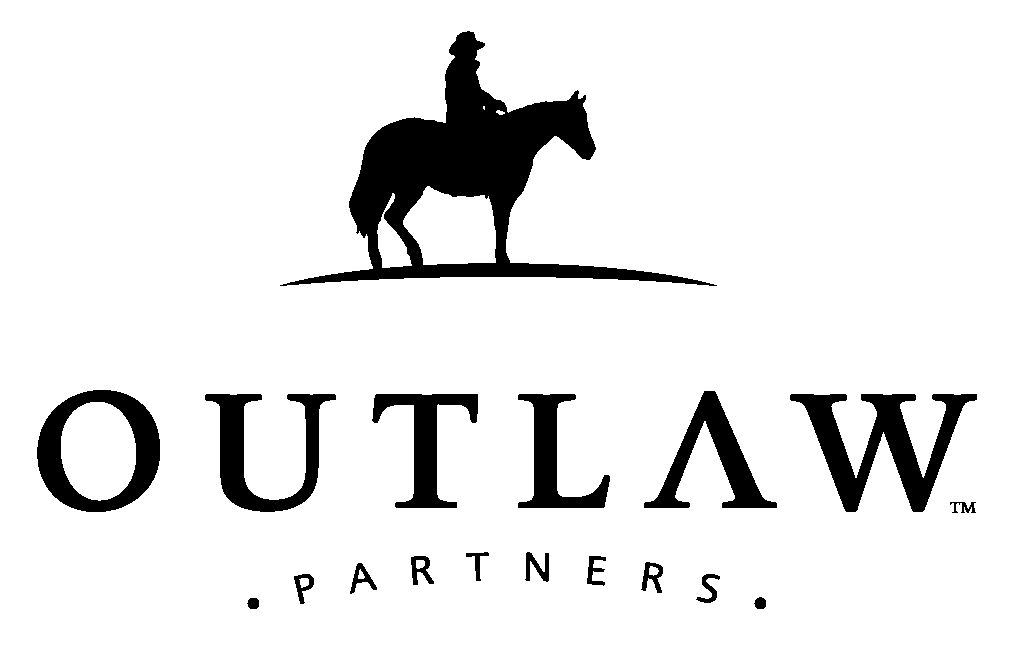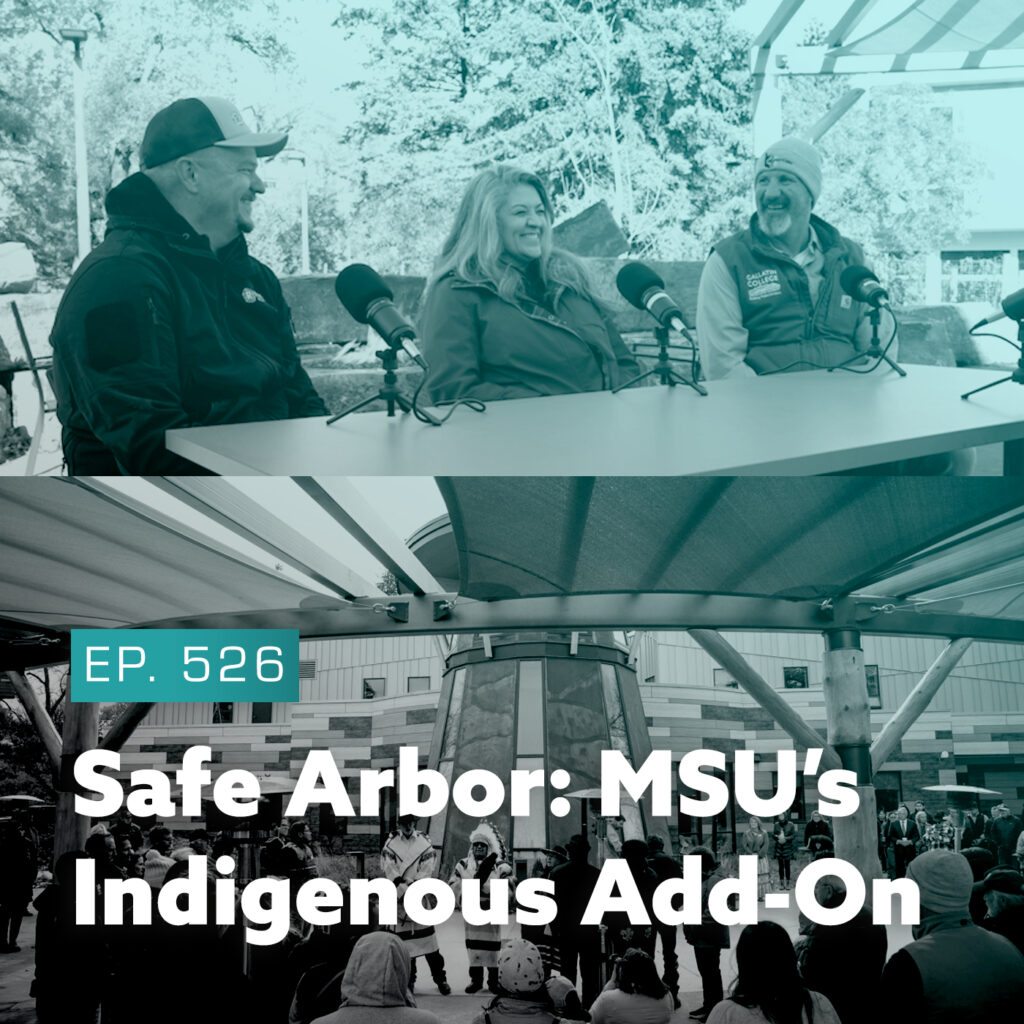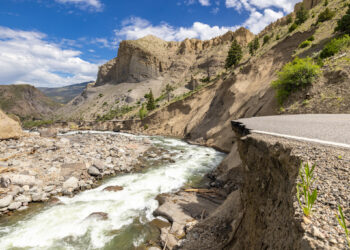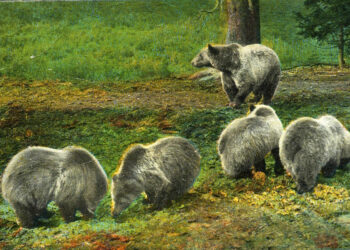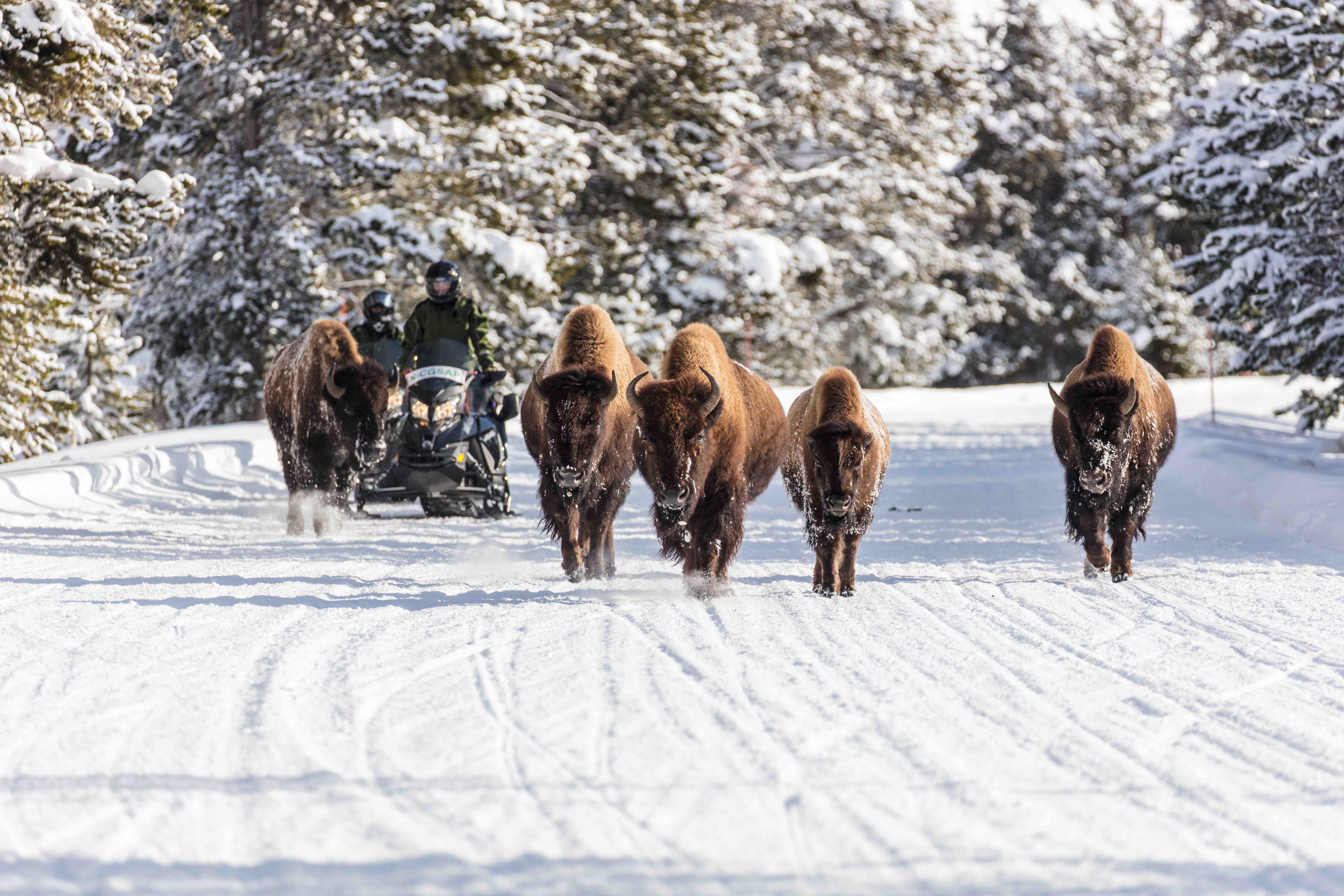Forty Years in Yellowstone
By Steven Fuller
As the Outlaw Partners editorial department nears the release of the Winter 2020 edition of Mountain Outlaw magazine, we at EBS look to share some of the best stories from that cherished sister publication as it heads into a celebratory phase—10 years running, and strong. Enjoy.
-EBS STAFF
If you came to Yellowstone National Park when it opened in 1872, you would have built a house here: On the Grand Canyon of Yellowstone overlooking the Yellowstone River, its famous waterfalls tumbling hundreds of feet over the cliffs. I have lived here, in the isolated Canyon winterkeeper’s house, since 1973.
The house appears in old tinted postcards behind the Canyon Hotel, an architectural spectacle when it was built in 1910, its perimeter measuring one mile. After World War II the National Park Service determined it obsolete, and the hotel was condemned. In August 1960 it caught fire and burned for two weeks.
The fire was declared accidental, but in 1975 an old timer knocked on the door of my cabin, the only landmark left from his time in Yellowstone. We had coffee. When I asked if he was here when the hotel burned he said, “Here? Hell, I poured the kerosene!”
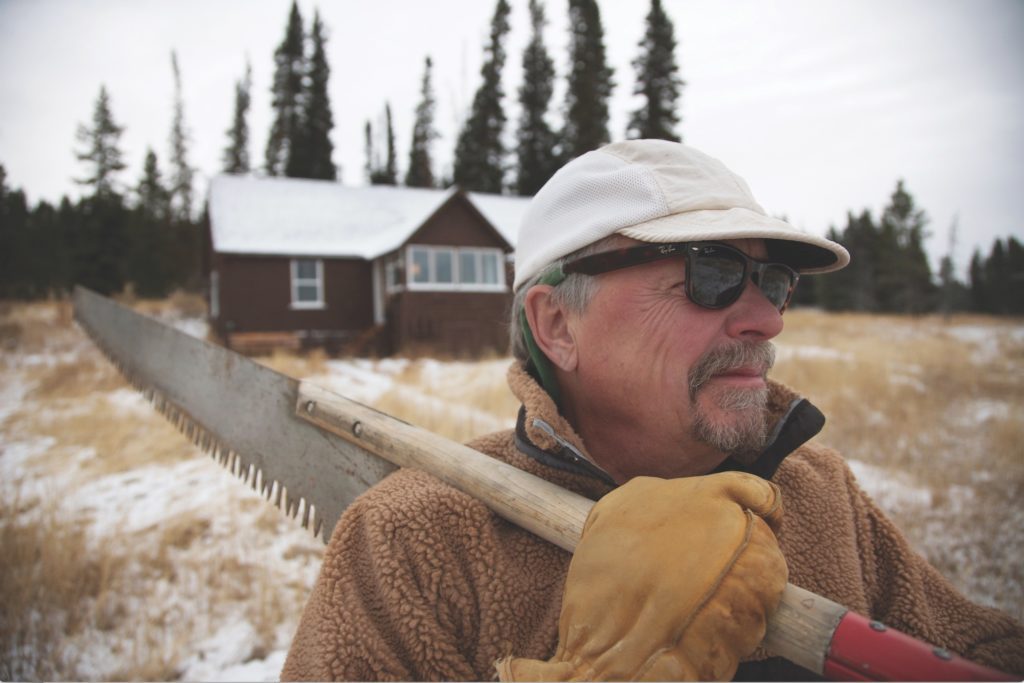
This house has been the Canyon winterkeeper’s for more than a hundred years. Since the 1880s, winterkeepers have been employed as caretakers to shovel snow off roofs of hotels closed for the long winters. I was the only applicant when I was hired in 1973. My wage was $13.25 a day.
The park looked after us. That first winter, they gave me a worn-out Johnson snowmobile. But when my wife Angela was hauling garbage, the throttle on the machine stuck and she fell off near the 1,200-foot canyon rim. Later, while I was riding it, the bicycle-style handlebars broke off in my hands.
A winterkeeper is “the toughest job in Wyoming,” Jerry Bateson, a retired winterkeeper, told me. I never thought about that until one winter when I had no snowmobile at all. I skied a mile to and from work carrying two shovels, a six-foot snow saw, and a 10-foot ladder on my shoulders from one building to the next.
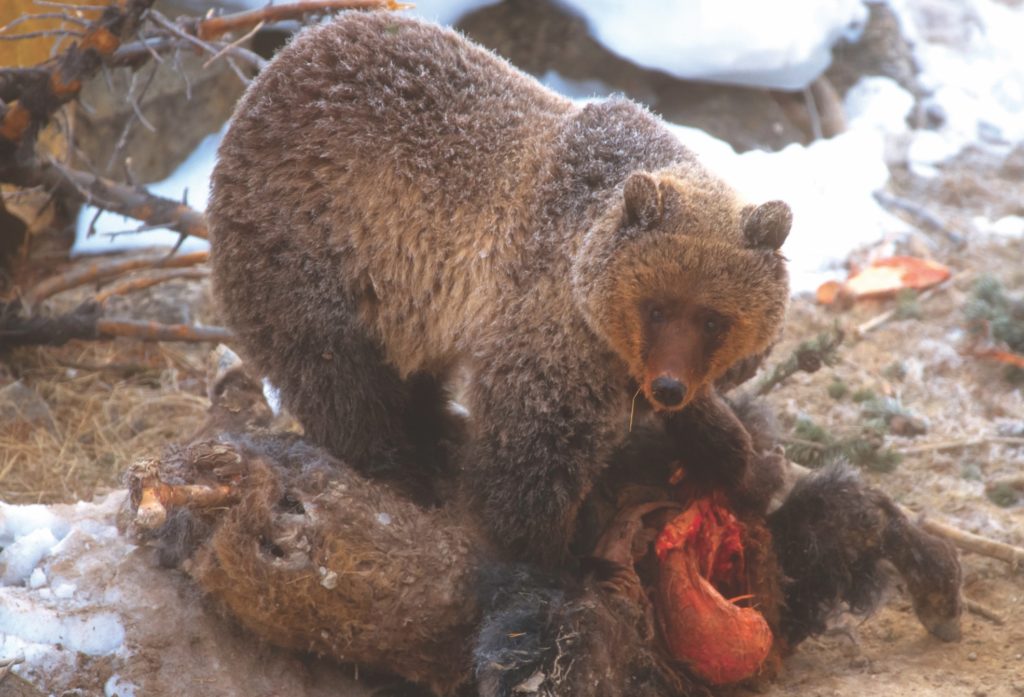
The nearest neighbors lived on Yellowstone Lake, 17 snowmobile miles south: a ranger, his wife, and two winterkeepers, one known as Silent Joe. Otherwise, we had to snowmobile 34 miles to Mammoth or 40 miles to West Yellowstone to visit anyone. And it was questionable if the snowmobile would make it there, let alone back home.
Every fall we cached the supplies needed for the next five months by the case or the 50-pound bag. We baked bread, brewed beer, sprouted beans, and used powdered milk. Our mail arrived in a big canvas sack once every month or so. I listened by short wave radio to the BBC. Power outages were frequent and could last as long as two weeks. Those nights were lit by candles and Coleman lanterns.
All living winterkeepers have testified their time here was the best in their lives. One winterkeeper, circa late 1940s, visited me shortly before he died. He said he killed a grizzly bear off the front steps and poached deer to supplement the meager wages winterkeepers have always been paid.
Grizzlies are still common here. When Angela and I moved in, hundreds of nails had been driven through the back door so the protruding points would tear a bear’s paws if it attempted to claw its way inside. I witnessed this defense firsthand on Oct. 5 during our second winter.
Angela who was eight months pregnant, our young daughter Emma and I were enjoying a dinner of elk stew when we heard a commotion at the small kitchen window. A huge, pig-eyed grizzly head intruded into the room.
My family fled the kitchen while I advanced to shoo the bear away, a difficult task since this occurred years before pepper spray was available. I first tried an ancient .22 pistol (would not fire); considered shooting a 12-gauge shotgun over the bear’s head (damage to kitchen wall too significant). I made a long pole with two prongs wired to an electrical outlet, the idea: shock the bear while it was stuck in the window (not sure this was a good idea). Later, I tried ammonia-filled balloons (no noticeable effect on the bear). I joined the family and we bailed out a window.
I radioed the ranger at Yellowstone Lake. The bear was trapped and released 40 miles northeast of Canyon, but two nights later it was back trying to claw its way through the walls. Trapped again, she proved to be an elderly, underweight female unlikely to survive the winter. Ultimately, she was euthanized.
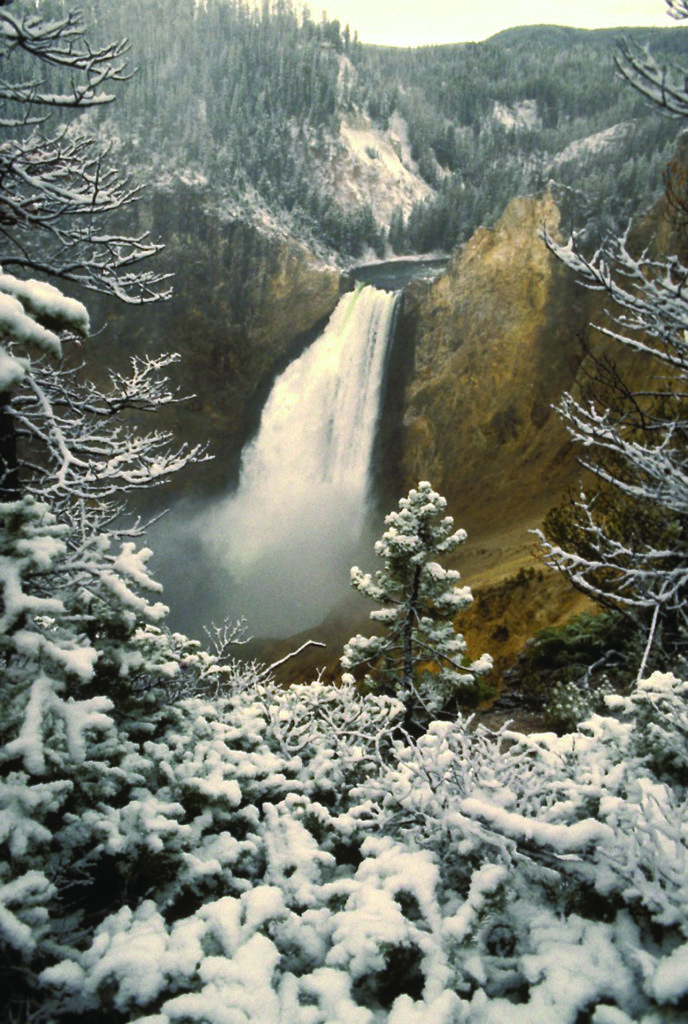
Things have changed in the 41 years I’ve lived here and I’m now one of two winterkeepers left in the park. In summer 2014, Canyon was open 111 days. In the 1970s, the season was 70 days long and otherwise quiet, rarely visited. The surrounding region had far fewer people than now and highways to the park were slow. Cars were less capable.
Salt Lake City International Airport is now only six hours away by rental car and regional towns have become cities. Big Sky is a world-class destination and the tiny Bozeman airport of the early ‘70s has grown exponentially.
Bozeman was a provincial town where local cowboys would give you a haircut if you needed one, and Budweiser and Velveeta were the closest to wine and cheese options, even within the cloistered university.
My winter life, while still challenging, is easier. Long ago, I wanted to live at the top of a mountain but have access to the Library of Congress. Now, with my Internet satellite dish, I have that connection.
Progress comes at a cost. Civilization has come to my doorstep and I now live in a box that grows ever smaller. Sometimes I wish the world was going in reverse, that “civilization” was in retreat rather than busy incorporating the last fragments of the wild and of the independent, self-reliant life I enjoyed for such a long time.
But I tasted the old wilder Yellowstone. And still I cherish the good fortune of living here.
Steven Fuller has passed much of his adult life off-road in Yellowstone and in roadless bush Africa, a combination he finds routinely complimentary. His writings, photographs, television works, and presentations have been well received on three continents.


